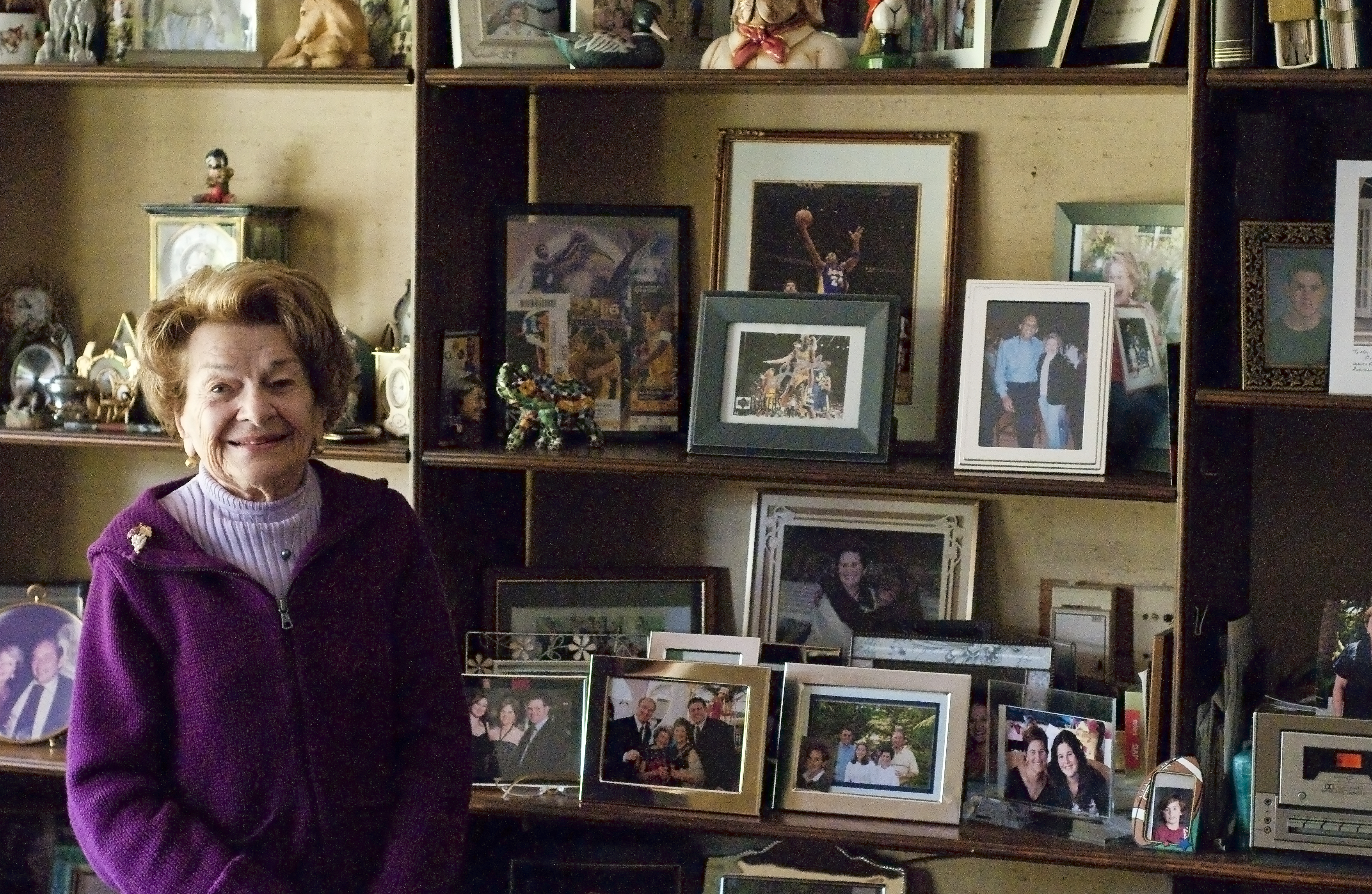Ida Wolf moved into her Westwood home in 1954, when five UC campuses had yet to be founded, John Wooden was just beginning to make his mark on UCLA basketball and Westwood Village was a thriving college town.
Nestled just east of the Mildred E. Mathias Botanical Garden with the sorority houses a block away, the former Associated Students UCLA employee raised her family in a little white house with a red door.
When Irene Goldenberg, a UCLA professor emeritus of psychiatry and biobehavioral sciences, moved in next door 10 years later, the cluster of shops down the street was already starting to change.
For almost 50 years the two women developed a love for UCLA and witnessed firsthand the history of Westwood Village unfold.
They watched the bustling village down the street morph from a thriving shopping district to the center of the cinematic world to the struggling center it is today.
“The Village was an elegant little small town when I first moved in,” Goldenberg said, perched next to Wolf in the latter’s sitting room that was scattered with family photos. “Over the years it changed dramatically. … We started going (into the Village) less and less.”
She said she can recall how the shops that she enjoyed started to gradually disappear.
The Janss brothers, developers stationed in Westwood and namesake of UCLA’s Janss Steps, started to develop the Village in the late 1920s with a focus on serving the UCLA community as well as the high-end neighborhoods that surrounded it, said Steve Sann, chair of the Westwood Community Council.
There was a Bullock’s department store where Ralphs grocery store is now and a Sears, Roebuck and Co. nearby that sold any furnishing a homeowner could want.
“My kids grew up having their first jobs working in the sweet shops and working in Bullock’s,” Goldenberg said.
But as time progressed, Goldenberg and her children began to outgrow the town.
During the 1980s not one grocery store could be found north of Wilshire Boulevard but the number of movie screens in Westwood had leaped from three to 18, Sann said.
“It was so inconvenient,” Wolf said, while her neighbor nodded in agreement. “We had to drive a ways just to buy groceries.”
The dramatic increase in the number of movie theaters made Westwood the primary option for production companies looking to premiere their movies, Sann said.
“The traffic was unbelievable,” Wolf said, remembering the hoards of kids that filled the Village on weekends to see the latest flick. “Bumper to bumper.”
The traffic that many current students experience in Westwood today is only a glimmer of what it was during the 1970s and 1980s.
Numerous factors contributed to the Village’s economic decline in the late 1980s. But the most notable was a series of gang fights that broke out in late 20th century. There was a 1,500-person brawl that broke out in line for an Eddie Murphy film in 1987, while a gang shooting in 1988 left a woman dead.
“It cleared out Westwood overnight,” Goldenberg said of the swift shift in Westwood’s reputation.
And as more promising shopping options like Third Street Promenade in Santa Monica and the Grove sprang up, Westwood became less of a necessity for Los Angeles shoppers, Sann said.
The neighbors recalled their frustration at seeing the amenities they had grown accustomed to disappear.
Wolf said she misses the multiple bookstores she would often visit, which have now been replaced by textbook stores.
“The Village became more just for students (over time),” Wolf said.
The village that Wolf and Goldenberg enjoyed in their early days in Westwood has not fully returned, but there has been some progress.
A Business Improvement District was introduced to Westwood more than a year ago with a goal of bringing the success Wolf and Goldenberg remember back to Westwood, Sann said.
A number of restaurants have successfully opened in the past few years. Sann said he anticipates that a City Target set to open in the summer will become a new shopping center for the town.
Despite the ups and downs of the Village, the two neighbors have stayed loyal to their town and the university across the road for more than half a century.
As students have come and gone for generations, Wolf and Goldenberg list their loyalty to the campus as a factor holding them in the college town.
“We have UCLA in our backyards,” Wolf said, with a smile. “We will always love the Bruins.”
